The door may finally be closing on Room 104, at least for the forseeable future, but that doesn’t stop us from peering through its window one last time by interviewing Mel Eslyn and Julian Wass, two of the creative forces behind the show. Mel, as well as being part of the production team, has co-written, written, and directed episodes (as well as being President of Duplass Brothers Productions). Julian is the man behind the musical curtains of Room 104 as well as having had a hand in writing and directing episodes and scoring numerous films.
Mel Eslyn
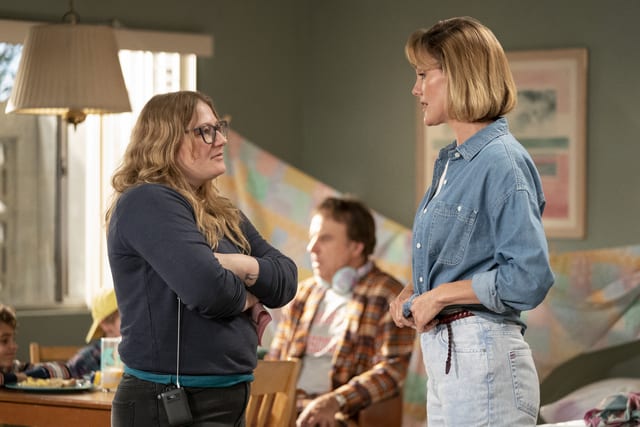
25YL: Firstly, thanks for helping to create one of the most creative and constantly surprising anthology shows in recent years. We love it here at 25YL, even when we don’t love it! Do you have a particular episode over the years that was the most fun to help create?
Mel: It’s always tough to pick a top episode for any category with this show, because we have such a range. How do you compare one to the other, when some of them almost live in different worlds or alternate realities of the same room? But a couple episodes immediately come to mind when I hear the word “fun”, and they all happen to be from Season 4. I mean…nothing is more fun than getting to play around with Kevin Nealon (“Oh Harry!“), but also…hanging out with a giant hamster that was really Jon Bass inside (“Star Time“)…also the definition of fun. But probably the most fun I had was getting to play around with swords amongst giant rock formations and singing men, while making the episode “The Last Man“. I felt like I was in the movies of my childhood. It was Highlander and Beastmaster 2: Through the Portal of Time.
25YL: I asked Sydney (Fleischmann, Executive Producer) this last year but I’ll keep at it! “A New Song” was possibly my favourite episode of Season 3 but it left me with many questions particularly with regard to the shadow figure and what it represented. As co-writer, did you have a clear vision for the animated backstory or is it deliberately left vague?
Mel: Love that you love that episode! If I recall, we didn’t originally plan for the projected imagery to be animated. At first, we were toying around with filming live sequences and utilizing VFX to create what we called “The Shadow Woman”. The projections as a whole symbolized the things inside the musician she was working through, via her art. And what she was working through was the residue of a past relationship…the things she either hadn’t dealt with, or processed, or overcome. The character is stuck, sort of in the middle zone of staying attached to an old love, or the decision to move on. And it’s affecting her creatively, it’s a blockage of sorts. At one point in the script I even used the word “blockage” to describe the shadow woman…she’s a blockage, a hurdle, a darkness.
And so Mark and I picked mundane moments (on the surface) in a relationship, and added the shadow woman to represent something larger than one person. We often build things, people and instances, up in our heads to be bigger, scarier, darker and more menacing (hence the shadow), when in reality the shadow is just a human. It’s just a woman who made her girlfriend feel small, or wouldn’t listen, or blocked her dreams. And we tried to represent those feelings symbolically with the imagery we projected. So when she’s made to feel small, she literally shrinks. But also, I think you can look at the shadow woman as a blank slate, who bounces everything back on our main character, the musician. Because the blockage, the fear, the sadness…that was all really coming from inside her at days end. It was really her facing her own demons.
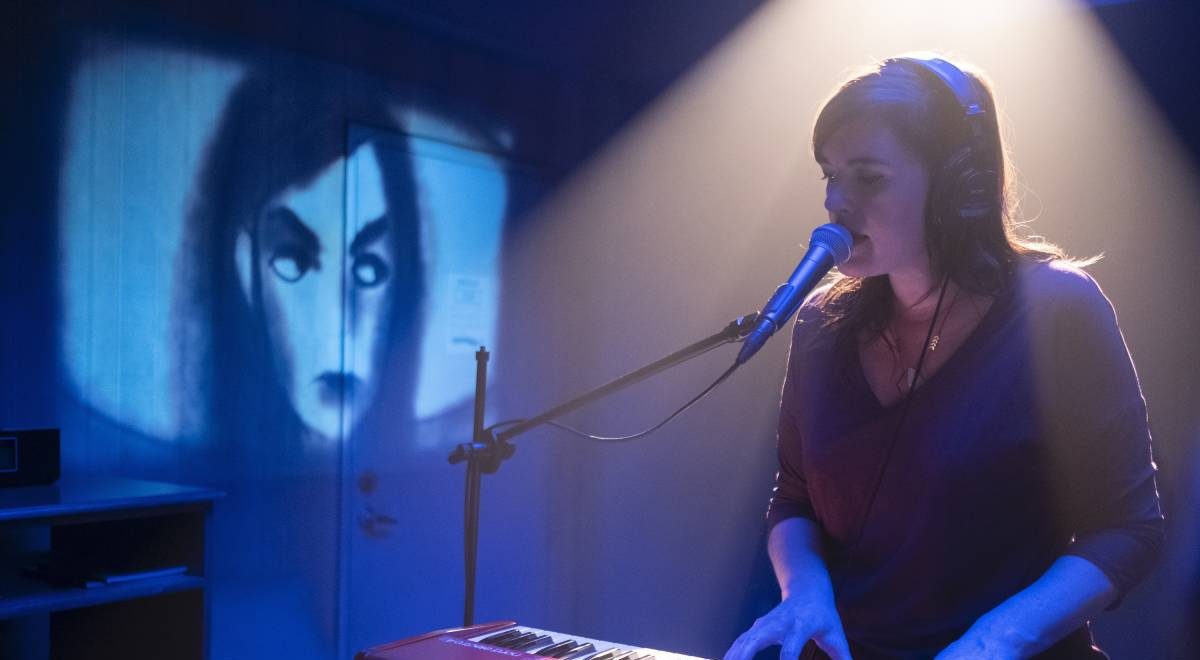
25YL: “The Specimen Collector” was your first time in the director seat as well as writing the episode. Aside from also being a great debut as a director, was that a role you chose to take on or were you persuaded?
Mel: Thank you for the kind words! I am madly in love with that episode. My plan from a very early age was always, be a writer, and then as soon as I knew what a director was, that got added to the dream. And then somewhere along my way of working in the film world, I stumbled upon producing. And then I met Mark, and then Jay, and suddenly I blink…and I’m running their company. It was never my plan to produce or run a company, but there was something about the way I fit into the Mark and Jay dynamic that just worked. Like the missing puzzle piece. Something clicked for all of us.
Mark and Jay have always known my true desires to drive my own content, and have always supported that. In fact, we always talked about making some room for me to get back to the writing and directing part, but it really was about me making it a priority to carve out that space for myself. That was kind of on me. And so, after Season 2 of Room 104, I realized, this was a perfect platform to start giving myself that creative outlet—doing bite-size stories where I could run a bit wild. So…I made the space. I wrote the first draft of “The Specimen Collector” in a hotel room in Toronto where Jay and I were premiering our film Outside In. I sent it to Mark and he called me five minutes later saying “Oh hell yeah”, and that was that.
25YL: “Oh, Harry!” clearly plays with sitcom tropes, were there any shows in particular that you had in mind while you were creating the episode?
Mel: I grew up on Cheers, Night Court and Wings…so all of those were rolling around in my head. Wings maybe the most. I’d also started watching Everybody Loves Raymond after working with Ray (Romano, in Paddleton), and that was pretty fresh in me as well. And then the credit sequence specifically, was visually inspired by the Home Improvement credit sequence, paired with the Perfect Strangers format of using the opening credits to set up the backstory.
25YL: There seemed to be a lot of references to the 1990s in Season 4, both explicit and in terms of the vibe of various episodes. Is this something that was planned in terms of what would structure the season, or do you feel like it just turned out that way?
Mel: Oh man…I’m trying to remember how much ’90s there was…Well there was “Foam Party” and “Oh, Harry!” for sure. And I guess we get a ’90s visitor to the room in “Bangs“. And I think Mark’s character in “The Murderer” went missing in the ’90s. Okay yeah, lotta ’90s. And then I went ’80s with “Fur“…so in general I think it was just a VERY nostalgic season for all of us across the board.
Mark, Julian and I all grew up largely in the ’80s into ’90s, so I know we all gravitate towards those eras as being formative and burned into our brains as specific times and places and feels. None of that was planned, that just came out of us.

25YL: What fed into the decision to make “Fur” an animated episode? Did the plot come first, followed by the thought to approach it this way, vice versa, or did this vision perhaps kind of come together all at once?
Mel: Mark and I had been discussing a werewolf story involving two young girls as a play on puberty since Season 1. I’d even written an earlier live action draft at the time. But I’d put the script away, ’cause it didn’t fully gel for me in that state, and because doing werewolves right takes a lot of work and care, and I didn’t want it to be corny or stagey. Separate from that, we’d been talking about doing an animated episode forever. So when Season 4 came about, and both of those were threads we hadn’t explored yet, I realized I could marry them to get a unique episode that could be accessible to a broader age range than our show normally is. Especially because it’s dealing with universal messages…the power inside each of us, the importance of friendship, and the reality of bad things in the world. I wrote the episode as a love letter to my younger self, and to all the little girls and kids in my life. And I worked to ride the line of keeping it kid-friendly enough—that it could be shared with them—and adults.
As an adult I still love watching cartoons because they trigger a nostalgia in me that I like to retreat into. And this story is about a time in your life when you are straddling childhood and adulthood, and I wanted the experience of the episode to feel that way. Plus, I loved getting to do this episode via animation because it allowed me to get playful, and it gave me a lot more freedom as to what I could have the werewolves do.
25YL: What would you say you were hoping viewers would take away from watching “Fur”? Are you happy with how it turned out?
Mel: I’m super happy with how the episode came out! It was so much fun to make. And I love getting to have the song and dance at the end. That’s everything that’s inside my heart…werewolves, ’80s music and high-kicking. Our composer Julian wrote me my dream theme song for that end. I’d asked for a marriage of the David the Gnome theme meets Pat Benatar, and he nailed it. I play it on repeat during my solo-dance parties, and friends send me videos of their kids dancing to it.
But to address your question of aimed takeaways…I honestly never try to kid myself that anyone is going to walk away with the same feelings, or messages or statements that I put into something. But what I was trying to capture in that episode was a specific feeling, time and place that I remember very clearly: the beginning of high school and essentially womanhood. It was fun, scary, adventurous, and also very awkward. It’s a time when many of us have skewed priorities, don’t always make the right choices, and everything seems bigger than it really is. In many ways, I wanted the episode to serve as a reminder that we all have fierceness inside ourselves that is powerful and beautiful. Even if we didn’t realize it then. But that doesn’t mean there’s not bad shit out there, and bad people. In the episode there’s a “bad guy”, and nothing gets too bad, but you get the hint that he’s kinda a piece of shit, or could be. And so it’s a toe-dip into the scary shit in the world, but not a deep dive. Because really what it’s about, is womanhood and friendship, and the power in both of those. And then most everything else, was just to have a good time…animated balls of dust tumbles, werewolves transforming against the moon, fight scenes, ’80s music and dance routines. So maybe some people will get out of it a larger message, and hopefully if not they have some fun along the way.
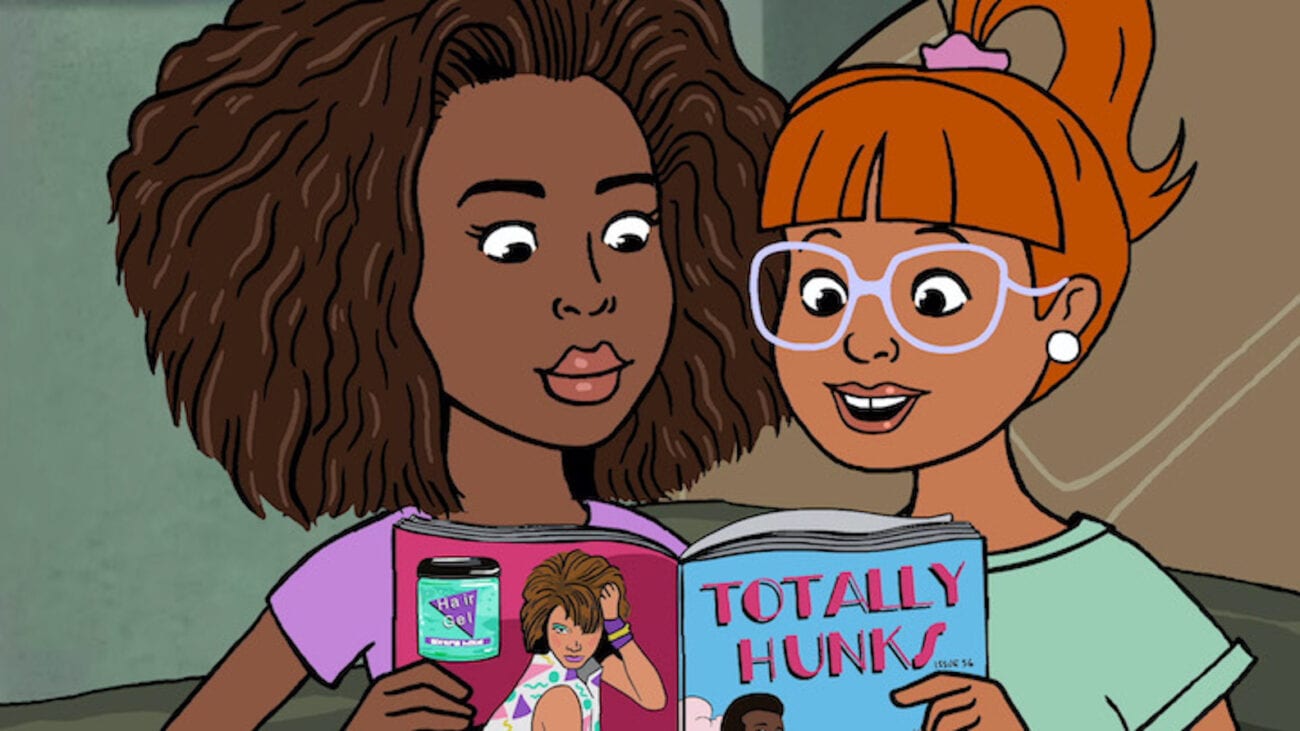
25YL: Was your transition from being a producer to eventually becoming “President of all things Duplass” in a fairly short timespan difficult, scary, or did you take to it quite naturally?
Mel: It was so natural that none of us really realized it had happened, until it already kind of had. I am a caretaker by nature, so as I started overseeing parts of the Duplass world, I noticed other parts that needed support, and just started taking those things on. No one really asked me to. I just started carrying the load, and forming more of a company to support Mark and Jay. That’s largely been my tactic in life, just do the thing that needs to get done, without asking permission or waiting to be told. I think the person in Duplass land that called it out first was actually Mark and Jay’s dad. He saw the load I was carrying, the puzzle piece I was adding, and basically said something like…”guys, she’s got it. That’s your person.” I don’t know how to explain it other than, we just all worked. So yeah, everything in life has an element of scary, but something about becoming “President of all things Duplass” just kind of made sense. But again, I don’t know if I’d do this position for anyone other than Mark and Jay (and their dad).
25YL: Mark seems to enjoy encouraging creative talent and getting people to experiment a lot. What is it like working with someone like that?
Mel: That spirit, is exactly why Mark and I were drawn to each other. That is a big driving force for both of us. The support of others’ creative visions, dreams and leaps. He and I both get visibly giddy when we talk about supporting new creative talent, or a new creative experiment. I’ve produced a lot of people’s first time features, inside and outside of Duplass, because I love helping foster creative voices. And at Duplass we all love taking leaps and pushing boundaries and experimentation, because we never want to feel stuck or stale. It keeps us young and energetic.
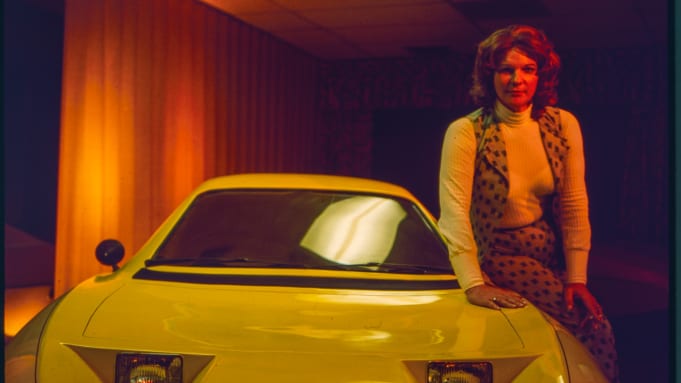
25YL: Can you tell us a little about what is in the pipeline at Duplass Brothers Productions?
Mel: Oh man, I wish I could tell you lots, but I might need to stick with what’s currently public. For example, super excited to bring Ady Barkan’s story to the screen with the documentary Not Going Quietly. We also have a great comedy series we are doing at HBO with Bridget Everett. And I seriously can not wait for the world to see our doc series The Lady and the Dale about the automaker Liz Carmichael. We’ve been in deep with that one for a long time now, and I feel like I’ve been living with Liz’s ghost, and I don’t mean that in a bad way. And then, I can promise you there are a bazillion things more in the works at Duplass, that I wish I could tell you about, but not yet. But what I can say is…we have kept very busy during quarantine. I mean, if you think about it, this is what we’ve been training for our whole careers. How do you make something with limited means, not a lot of people, and a lot of imagination. If anyone can find a way to make a movie or TV show being stuck at home…we can. That’s all I’ll say!
Julian Wass
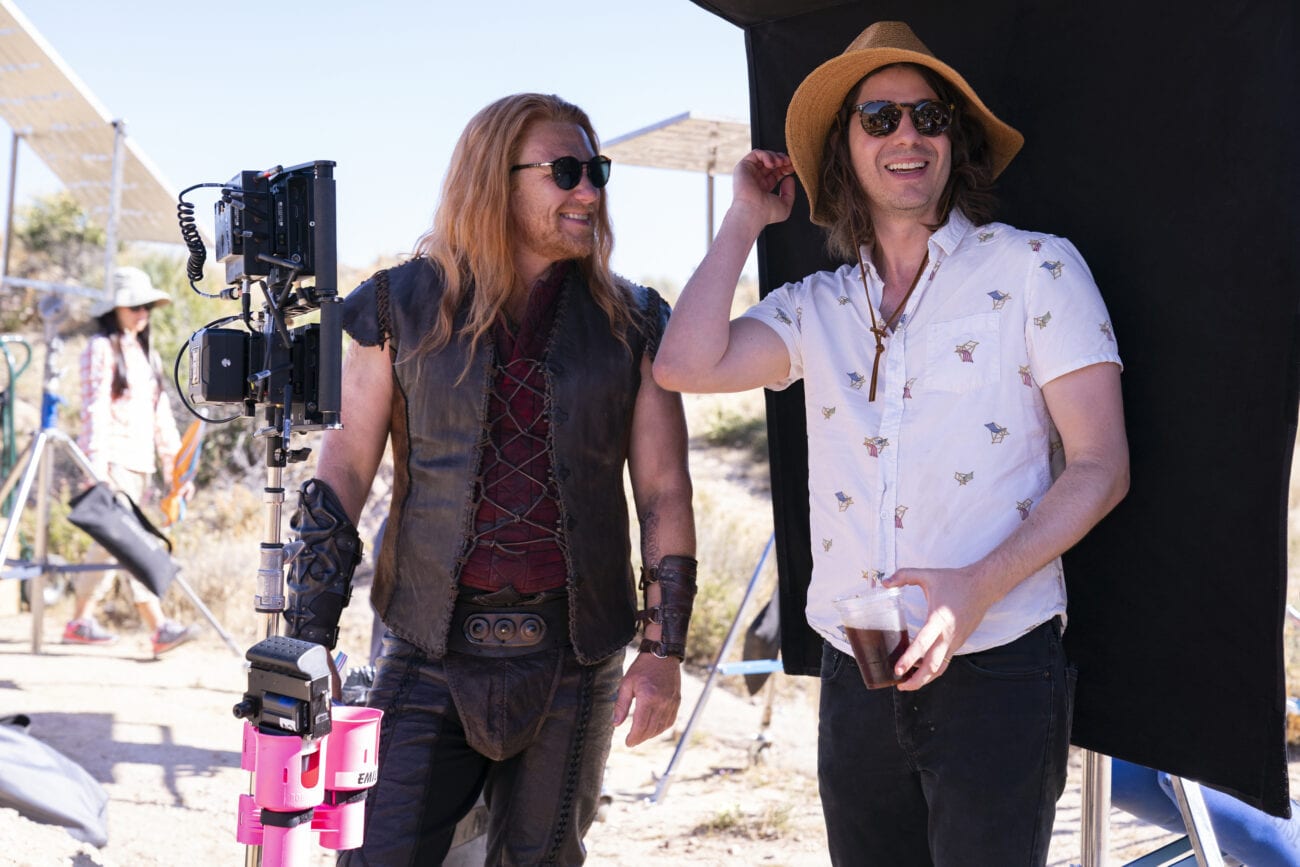
25YL: Your scores have contributed hugely to the unique atmosphere of each episode Room 104 which is especially important given its set restrictions, so huge thanks and credit to you! There seemed to be a particularly ‘90s vibe to this season. Is this deliberate?
JW: It’s maybe not totally deliberate, but the product of having a creative team that came of age in the ’80s and ’90s. What’s funny is that Mel pointed out that without meaning to, all my my instagram posts about the episodes I was involved in writing or directing this season seemed to begin with “When I was a kid” or “I spent most of my childhood”. So I think we all were tapping into that nostalgia as we came up with the ideas of this season.
25YL: It seemed like you all had a lot of fun making “The Last Man”—is that accurate? What can you tell us about the process that led to this episode? Were there any particular fantasy shows, etc. that you had in mind as influences?
JW: It’s hard to communicate clearly how much fun we all had with “The Last Man”. From writing the songs with Mark, to the design of the costumes and swords, from watching sword master and fight choreographer Tony Angelotti work with the actors to filming sword fights at Vasquez Rocks, it was an absolute blast. Shooting the episode in four days was a massive challenge, and the actors went through about three weeks worth of sword training in two days while also learning and pre-recording the songs. Still, we all often looked at each other and admitted that we couldn’t believe we were all getting paid to have this much fun.
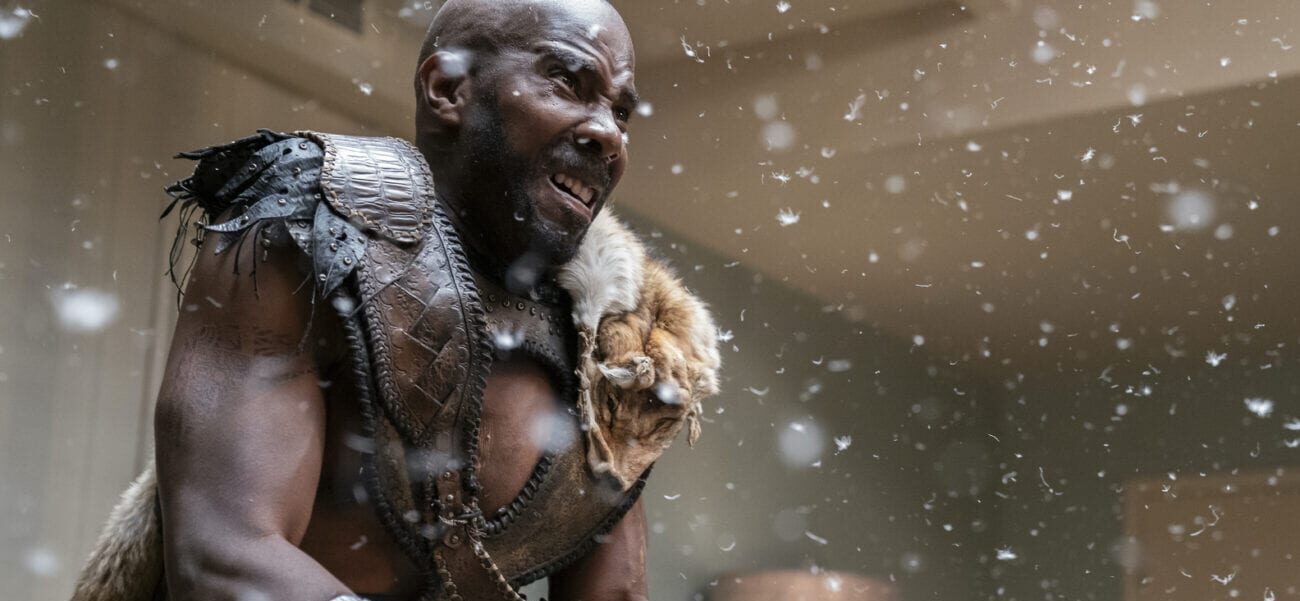
25YL: Tell us a little about “Generations” and its conception. How did writing it differ for you from “Arnold” which was a more musically-focused episode?
JW: Writing “Arnold” was a heavily collaborative process, plus Mark and I wrote the songs first and then sort of shaped the dialogue and the other scenes around those songs. With “Generations”, it was the second teleplay I wrote on my own (after “No Dice“) and I just sort of followed all of these complex feelings I had about my childhood and about my current life as a parent. I was a particular anxious and depressive child, and I remember feeling sad about so many things. So the character of Kier, especially as a child, came very easily to me; a child who feels that something is wrong with his life but can’t quite put his finger on it.
There is a late ’90s P.M. Dawn album entitled Dearest Christian, I’m So Very Sorry For Bringing You Here. Love, Dad; Christian being Attrell Cordes’ newborn son. I didn’t understand it at the time, but it means a lot to me now as a parent, in that by bringing your children into this world, you open them up to the suffering that comes with being a human. There were so many feelings I felt as a kid that broke me down, and when I became a parent, I wanted so badly to protect my daughters from those feelings. And then, something incredible revealed itself to me: my kid’s struggles were different from mine. They were stronger than me in so many ways, so much better than me. They didn’t need protecting, they didn’t need me to apologize for bringing them here. And so that’s Keir’s journey, to realize that his mother’s decision to bring him onto the generations ship that he felt denied him of the life he deserved, the one that she apologizes for, is something he does not need to apologize to his daughter for. That she accepted her life and enjoyed it for what it was.
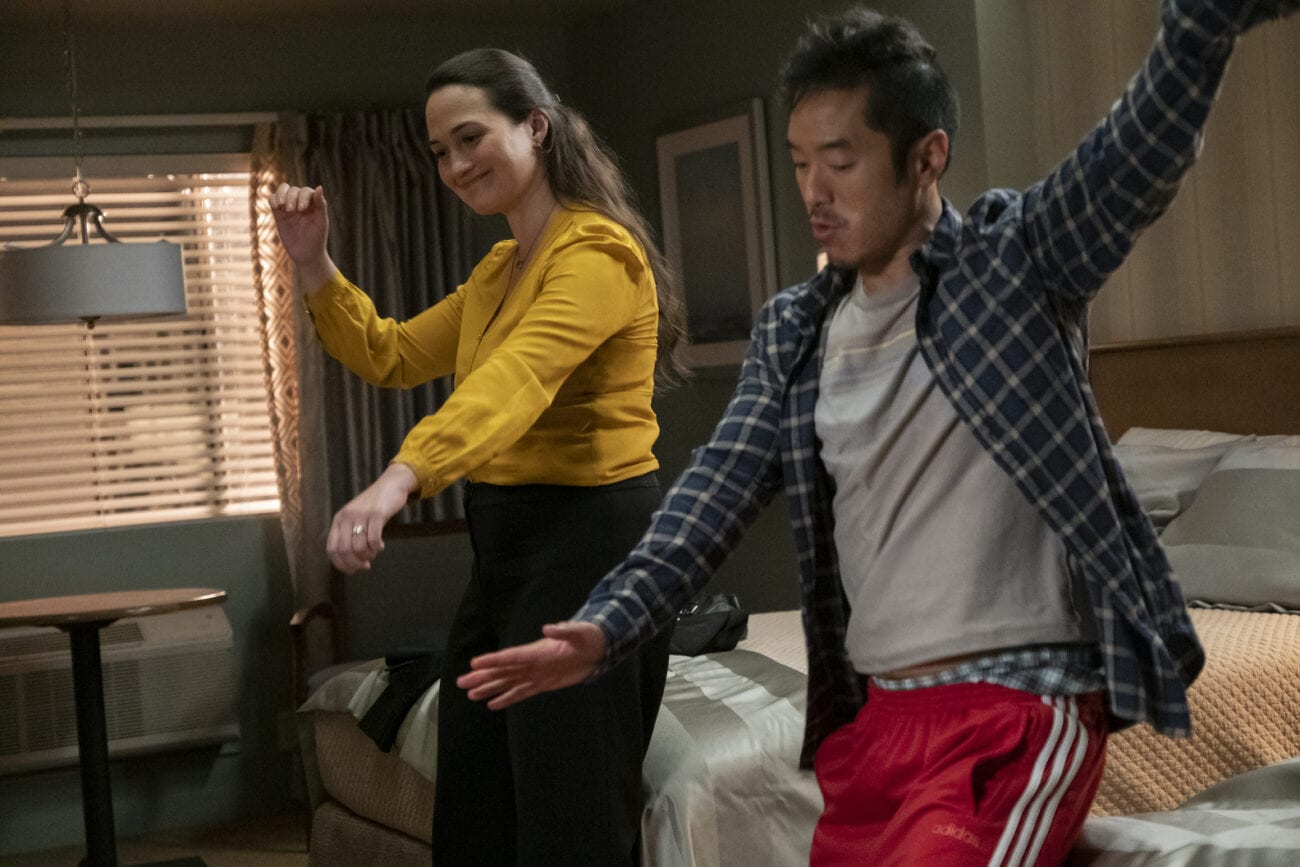
25YL: Was the initial idea for “The Night Babby Died” yours? Is there some particular childhood console-based angst you are trying to work out in this episode?!
JW: The initial spark of this episode was a story that Mark had shared with me about how him and his brother once lost their beloved Wizardry character, Bruce, and refused to come to dinner afterwards. Then, later on, I learned that it was possible to resurrect a deceased Wizardry character, and I thought about how Bruce’s bones were still there on Mark and Jay’s cartridge, wherever it may be.
I spent so many hours crowded around a TV playing video games with my friends, and before that with my parents. My father and I would switch off with the controller, and my mother would draw detailed maps of the Legend of Zelda dungeons with colored pencils on graph papers, complete with legends in the bottom right corner of the page. So for me, video games have always represented intimacy and closeness, so when Jenée and I began to think about what kind of story we could tell about a dead video game character, we came up with the themes of Babby as an avatar for this childhood, and for their friendship. We listened to Joni Mitchell’s “Circle Game” often as we wrote, which is a beautiful and compassionate response to the notion that growing up in inherently tragic.
25YL: Do you have a favourite episode of Room 104 or one that resonates particularly for you?
JW: Season 1’s “I Knew You Weren’t Dead” really haunted me and has still stuck with me. Jay Duplass is so great in it, but I’ve had friends and family members I’ve lost return to me in dreams and I found that episode immensely heartbreaking.
25YL: Please tell us how MITSUDA came about?
JW: During my brief stint as a lo-fi hip-hop producer, I made a beat out of a piece of music from Yasunori Mitsuda’s Xenogears soundtrack. At the time I just thought it was novel to sample the music I grew up loving, but after the song (Main Attrakionz & Danny Brown’s “Cloud Skatin’”) turned out so well, I wanted to see if I could create more beats out of RPG soundtracks. Then I asked my producer friends at the time if they wanted to join, and while many of them did, I ended up making about half the tape under various aliases. My friend Derek Yu, who is an incredible game designer and pixel artist, created the 16-bit portrait of Mitsuda which we used as cover art. I’m really proud of the fact that Mitsuda himself tweeted a “thank you” to me. He is my favorite video game composer of all time and whose influence on me I can’t begin to quantify.
25YL: You seem to have shifted from music production into TV and Film scores in recent years. Is there a reason for this?
JW: Even when I was producing, I was pursuing scoring. That’s was my main goal from probably 2006 on, so even though I was in a band and was involved in record production, scoring was always there. And it all comes from a love of music but a severe lack of interest in performing music live. I’ve always had nerves, and a perfectionist edge, so studio wizardry appealed to me more than live performance. I idolized George Martin when I was younger, and really wanted to be a record producer. When the music industry was changing in the early 2000s, I started scoring short films and found that the types of things I was able to do in these weird film scores were scratching the same itch as producing records; experimenting, creating new sounds, and even better, I could do it alone!
25YL: What anecdote would you use to best sum up who Mark Duplass is and the relationship you have with him?
JW: I could probably write a book of anecdotes about our friendship, which is vast and deep, but I will simply go with the time we floated in a pool together silently while he played me Sun Kil Moon’s “Song for Richard Collopy”. It was a perfect moment.
Many thanks for Mel and Julian taking the time to talk to us and answer some of our Room 104 questions. If you’re a fan of Julian’s music, take a look at some of his other releases beyond film scores. For now though, we have to check out…possibly for the last time.

